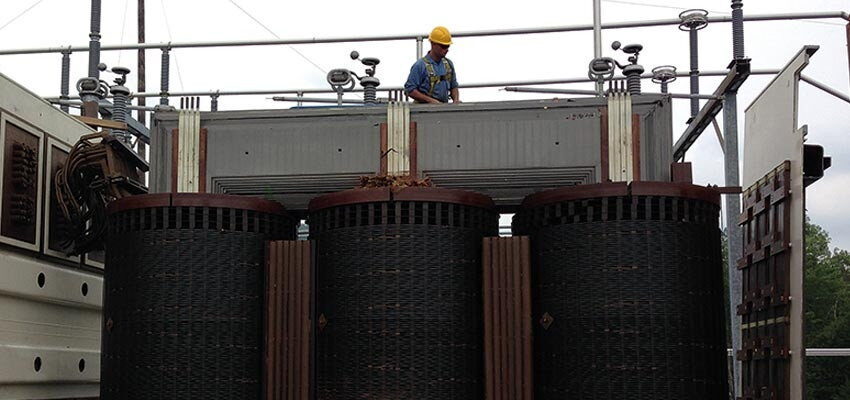
Transformers with low degree of polymerisation of paper
Present observations indicate that the life of transformers with a DP of paper of 200 could be extended by several years without increasing their risk...
byMichel Duval

Present observations indicate that the life of transformers with a DP of paper of 200 could be extended by several years without increasing their risk of failure due to the mechanical condition of paper, thus significantly reducing capital investment costs needed for their replacement.
Keywords: power transformers, low degree of polymerisation (DP) of paper
Introduction
Abnormal faults are the main cause of failure of transformers in service as a result of transformer design (e.g., hot spots), manufacture (e.g., loose bolts), operation (through faults, overloading) or poor maintenance (e.g., high moisture, oxidised oil, leaking gaskets, corrosion, etc). Most electrical and thermal faults can be detected by dissolved gas analysis (DGA) in oil.
Paper insulation also slowly degrades during the life of transformers, more or less rapidly depending on their operating/loading conditions.
Owners of transformers with degraded paper are faced with a technical and financial dilemma:
– if they do not replace these transformers early enough, they risk unplanned failures, the cost of which may be very high, largely exceeding the cost of the transformer itself.
– if they replace them too early, even though they could still operate satisfactorily for several more years, this will markedly increase their capital investment costs.
Deciding on the optimum time to replace transformers with degraded paper depends very much on a correct evaluation of their risk of failure at various stages of paper degradation. Presently there is no agreement among transformer experts on this issue.
Degree of polymerisation of paper
The extent of paper degradation is represented by the degree of polymerisation or DP of paper.
New insulating paper has typically a DP of 1100 and a high tensile strength. This high initial tensile strength is needed to run insulating paper on the winding machines used to wrap it under tension around conductors without tearing it.
In transformers in service, DP decreases more or less rapidly, depending mainly on temperatures in the transformers and on other factors such as moisture, oxygen content and acidity of oil. The more degraded the paper is, the lower is its DP.
A DP of 200 is presently considered in the industry as the lowest value acceptable in transformers in service. It corresponds arbitrarily to paper having lost 60% of its initial tensile strength measured in the laboratory [1]. It has been assumed since the 1970s that below a DP of 200 paper is not able to withstand any more of the mechanical forces occurring in transformers, therefore that the transformers are going to fail imminently and have reached their ‘end-of-life’. Another popular statement is that ‘the life of the transformer is the life of paper’.
The accuracy of these assumptions and statements, however, has never really been demonstrated in transformers in service.
Determination of DP of paper
DP of paper can be determined:
– either by direct measurement on paper samples taken from transformers removed from service (e.g., in the bottom, middle and top of windings), paper samples are dissolved in a solvent and the viscosity of the solution measured. The higher the viscosity, the longer the cellulose chains, the higher the DP and the mechanically stronger the paper. This, however, requires paper samples to be fully soluble in the solvent, otherwise measurements will falsely indicate a lower viscosity, lower DP and paper mechanically weaker than in reality.
– or by indirect measurement of paper degradation products in transformer oil:
– furans, using different models of DP vs furans content available in the literature.
– methanol [2].
– CO2 and CO2/CO ratio.







